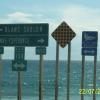Speed break
-
Members Online
- toto
- Stubby
- StevenL757
- PT20J
- M20S Driver
- BenP
- ArtVandelay
- 201er
- Schllc
- Hank
- georgewdean1020
- BlueSky247
- Rmfriday
- kortopates
- Planter
- Jake@BevanAviation
- Brandt
- Mike A
- BaldEagle
- BravoWhiskey
- Kelpro999
- DC_Brasil
- KSMooniac
- EricJ
- Utah20Gflyer
- 67 m20F chump
- varlajo
- OR75
- PierreL
- hammdo
- The Other Red Baron
- IFLYIFR
- Fly Boomer
- Scott Dennstaedt, PhD
- Ricky_231
- catchman86
- Jblanton
- hubcap
- FlyingScot
- dkkim73
- Ameadows82
- redbaron1982
- MDMooney
- TCC
- AF M20J
- Herman_1965
- Ethan
- BrandonA
- wombat
- Dream to fly
- Shadrach
- Matthew P


Recommended Posts
Join the conversation
You can post now and register later. If you have an account, sign in now to post with your account.